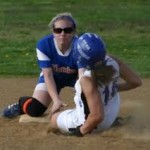As a member of “Leading Educators to Home Base”, eight of us have been enlisted to find online resources to enter into the Resources that are part of the Instructional Improvement System of North Carolina’s Department of Education’s HomeBase. In addition to finding the resources, we ‘tag’ their features for the data base to later sort through when accessed by teachers who are in search of resources.
Many educators regularly look online for resources to support instruction. The power of the internet has surpassed what our textbooks can provide, what we can singularly create on our photocopier and what our colleague next door might have created. As 21st century educators, we have already begun googling to find something for a unit this year or for tomorrow morning. It was easy to find YouTube and Wikipedia but now we are following our favorites on Twitter, joining Edmodo, reading our heroes blogs and trying to figure out how to remember and find again our great online treasures. Some of you may have even bought lessons from teacherspayteachers.com
Surely, many of you, like me, have gone online to look for that one thing we need and more than an hour later, emerged from the digital void with other great discoveries in hand, but not what we set out to find. Some of us got organized with digital bookmarks, Delicious and Diigo to help us organize our discoveries. Have you ever asked yourself, “Why can’t Google use a query string for grade levels, types of materials, free resources, quality materials AND resources that align with my NC state standards?” or simply, “How could I best search for resources I need?”
So, in our Kenan fellowship, eight of us have been tasked with finding useful resources that would “Lead Educators to Home Base” to find useful materials. It is a great idea, trying to harness the power of a digital search while connecting educators to useful resources that reflect our standards. As you might imagine, finding online resources for English Language Arts, Mathematics, Social Studies and Science is not a difficult task. So, you would not be surprised to hear that many people have found a multitude of resources for those subjects. There are instructional areas that are not as abundant online and that may require some expertise to decipher. So we were chosen to be the Ocho to fill some of the gaps. Angel and Joni are Establishing Several Lists of resources to assist the ESL teachers. Michael and Jayne are addressing the needs of The Arts – with Jayne drawing the visual arts resources together and Michael arranging resources for the music teachers to make their life more harmonious. Lisa and I are trying to corral and lasso in the Spanish resources that might help our peers teaching Spanish.
There are more topics taught in North Carolina than can all be equitably supported but Beke is plowing through CTE and agriculture resources and Joyce is examining elementary Science resources. Others NC teachers were brought into DPI in March 2013 to be trained in this process. They represent ESL, PE and Healthful Living, The Arts and World Languages and are tagging resources every month.
So, is it just “Surf’s Up” all day for us as we surf the internet? Hopefully, not. We each bring some experience to the table that can help us more quickly begin to ‘tag’ useful resources. This includes finding resources that are quality resources, online, aligned to our standards and free. Into a data base, we enter a title and a description. We choose the approximate grade level K – 13 (can’t forget our early college students!) and name the type of resource (video, audio, lesson plan, chart, reading sample, etc.) We list the publisher, creator and copyright. Our entries are checked by staff at NCSU in the Center for Urban Affairs and Community Services. Our mentors come from DPI Learning Systems. We specifically have three mentors: Carmella Fair, NC Falcon Coordinator, Dan Gwaltney, an education consultant with SPI, and LaVerne Weldon, an education consultant with DPI.
Hopefully, not. We each bring some experience to the table that can help us more quickly begin to ‘tag’ useful resources. This includes finding resources that are quality resources, online, aligned to our standards and free. Into a data base, we enter a title and a description. We choose the approximate grade level K – 13 (can’t forget our early college students!) and name the type of resource (video, audio, lesson plan, chart, reading sample, etc.) We list the publisher, creator and copyright. Our entries are checked by staff at NCSU in the Center for Urban Affairs and Community Services. Our mentors come from DPI Learning Systems. We specifically have three mentors: Carmella Fair, NC Falcon Coordinator, Dan Gwaltney, an education consultant with SPI, and LaVerne Weldon, an education consultant with DPI.
So, do we only surf and play tag? There will definitely be some surfing once we have tagged our 



favorite and most useful resources. Most of our time will be spent ’tagging the resources and identifying the various features of each to help when teachers search for useful resources. We will also be participating in the various Summer Institutes across the state this summer. Some of us will attend a state Board of Education meeting to comment on this process and tool. For our projects, we need to document the uses of Home Base for specific purposes.
Do you have some great resources for our content areas? Please, DO share. Instead of running away as we see you approaching (as happens in the typical game of tag), we will happily be ‘tagged’ by you so that we can ‘tag’ the resource and get it into Home Base.










